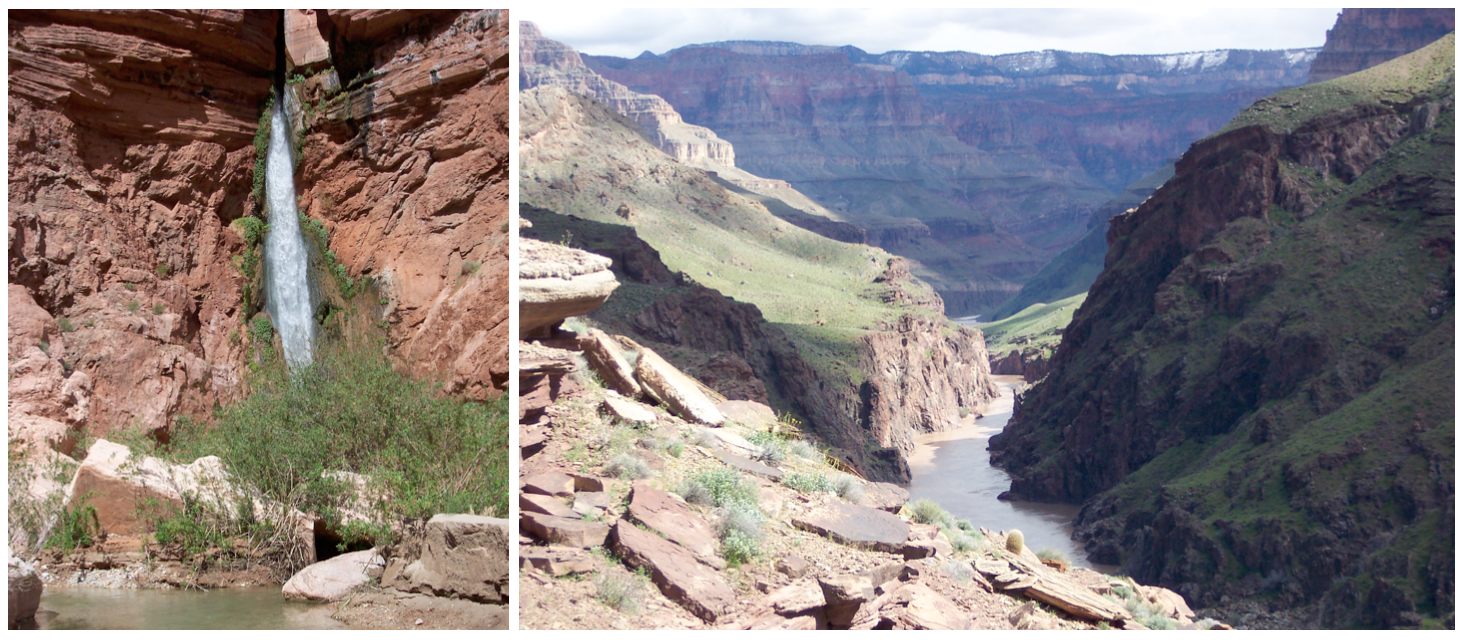One place along the Colorado River in the Grand Canyon that is not to be missed is Deer Creek. Though many are familiar with Deer Creek for its spectacular waterfall and sculpted, sinuous sandstone channel, many may miss out on the opportunity to see the surrounding plant community the way we observed it on March 23, 2005.
The confluence of Deer Creek and the Colorado River exhibits the same vegetation associations witnessed along the channel banks and at other confluences along the river. There are dense patches of seepwillow (Baccharis salicifolia), tamarisk (Tamarix ramosissima), and willow (Salix sp.) with horsetail (Equisetum sp.) interspersed throughout. Moist areas adjacent to the waterfall support delicate maidenhair ferns (Adiantum capillus-veneris). As you climb the steep trail to the hanging canyon above, you find yourself in a mix of desert vegetation dominated by brittlebush (Encelia farinosa), ephedra (Ephedra sp.), and barrel cactus (Ferocactus acanthodes var. lecontei) with prince’s plume (Stanleya pinnata) providing splashes of yellow blooms along the hillside (Figure 1).

The trail then winds through the meandering sandstone canyon, where you catch your first view of the giant cottonwoods (Populus fremontii) where the canyon begins to open up into a series of pools (Figure 2).

As you follow the trail past the sparkling pools, you begin to encounter what strikes me as a very unusual mix of vegetation. Riparian species, such as the majestic cottonwoods, become mixed with an understory of pricklypear cacti (Opuntia sp.), beargrass (Nolina parryi) and catclaw acacia (Acacia greggii), with a lush exotic annual grass understory (Figure 2). At the time of our visit, we were fortunate enough to witness the amazing display of flowering globemallows (Sphaeralcea sp.), (Figure 2). This has been an unusually wet winter in the arid southwest, and the excess moisture was evident by both the thick cover of annual grasses and the profusion of orange blossoms from the globemallows.
Though many visitors to the canyon snap photographs of Deer Creek falls, there is a diverse and unusual plant community hiding up the canyon that should not be missed. Even if you are unable to experience this area during an unusually wet season, this plant community is still interesting without the showy floral displays. The close association of riparian species such as cottonwoods and willows with desert species such as catclaw acacia, pricklypear cactus and beargrass is something that can be experienced in few other environments. I recommend that anyone who has the opportunity should spend time in the upper canyon contemplating the diversity and uniqueness of this mesic/xeric terrestrial juxtaposition.
